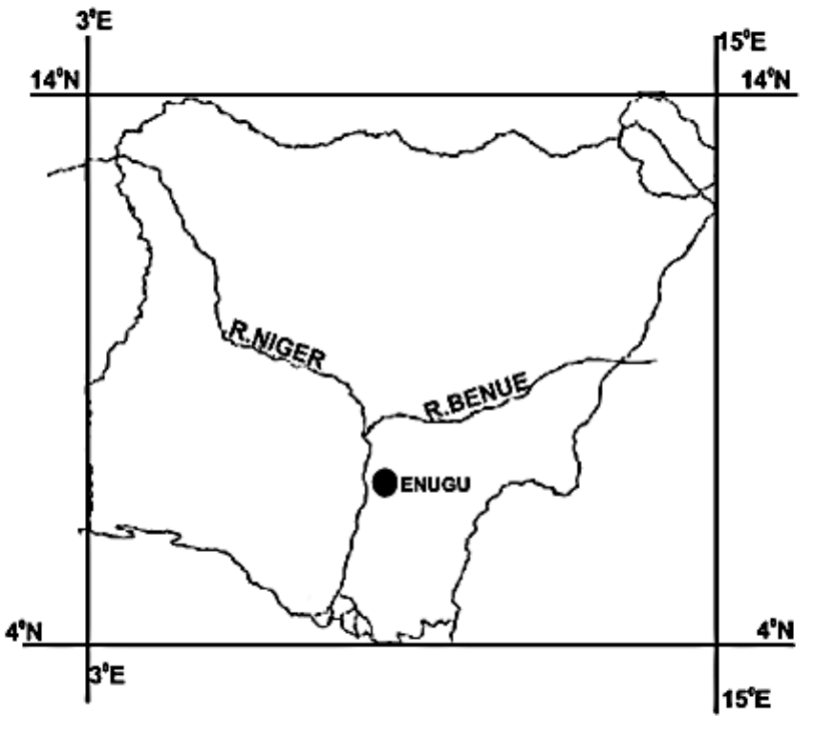WAEC: GEOGRAPHY
Quizzes
-
2009 Geography WAEC Past Questions CBT
-
2010 Geography WAEC Past Questions CBT
-
2012 Geography WAEC Past Questions CBT
-
2011 Geography WAEC Past Questions CBT
-
2013 Geography WAEC Past Questions CBT
-
2014 Geography WAEC Past Questions CBT
-
2015 Geography WAEC Past Questions CBT
-
2015 Geography WAEC Theory Past Questions CBT
-
2014 Geography WAEC Theory Past Questions CBT
-
2016 Geography WAEC Past Questions CBT
-
2016 Geography WAEC Theory Past Questions CBT
-
2017 Geography WAEC Past Questions CBT
-
2017 Geography WAEC Theory Past Questions CBT
-
2018 Geography WAEC Past Questions CBT
-
2018 Geography WAEC Theory Past Questions CBT
-
2014 Geography WAEC Theory Past Questions*
-
2015 Geography WAEC Theory Past Questions CBT*
-
2016 Geography WAEC Theory Past Questions CBT*
-
2017 Geography WAEC Theory Past Questions CBT*
-
2018 Geography WAEC Theory Past Questions CBT*
-
2019 Geography WAEC Theory Past Questions CBT*
-
2019 Geography WAEC Past Questions CBTdrsoji
-
2020 Geography WAEC Objective Past Questions
-
2020 Geography WAEC Theory Past Questions
-
2014 Geography WAEC Past Questions CBT*
-
2021 Geography WAEC Objective Past Questions
-
2021 Geography WAEC Paper 2 Theory Past Questions
-
2021 Geography WAEC Paper 3 Theory Past Questions
ESSAY
GEOGRAPHY 2
[80 marks]
HUMAN GEOGRAPHY
Answer four questions in all: two questions each from Sections A and B.
All questions carry equal marks.
SECTION A: (1 – 3) Answer two questions from this section
SECTION B: (4- 6) Answer two questions from this section
Quiz Summary
0 of 6 Questions completed
Questions:
Information
You have already completed the quiz before. Hence you can not start it again.
Quiz is loading…
You must sign in or sign up to start the quiz.
You must first complete the following:
Results
Results
0 of 6 Questions answered correctly
Your time:
Time has elapsed
You have reached 0 of 0 point(s), (0)
Earned Point(s): 0 of 0, (0)
0 Essay(s) Pending (Possible Point(s): 0)
Categories
- Not categorized 0%
- 1
- 2
- 3
- 4
- 5
- 6
- Current
- Review
- Answered
- Correct
- Incorrect
-
Question 1 of 6
1. Question
SECTION A
The Table X below contains information on population of four districts of country Z in the year 2016. Use the information to answer the questions which follow.
Table X
District Population (millions) Land Area (km2) A 5.5 60,000 B 8.0 105,000 C 6.7 125,000 D 4.8 88,000 (a) Calculate the:
(i) total population of country Z; [2 marks]
(ii) total land area of country Z; [2 marks]
(iii) population density of country Z; [2 marks](b) State four factors which are responsible for high population density of countries [8 marks]
(c) Explain three advantages associated with countries of high population density [6 marks]
-
This response will be reviewed and graded after submission.
Grading can be reviewed and adjusted.Grading can be reviewed and adjusted. -
-
Question 2 of 6
2. Question
(a) (i) Define settlement [2 marks]
(ii) Name two types of urban settlement classified according to population size [2 marks]
(b) In what five ways are urban settlements dependent on rural Settlements [10 marks]
(c) Outline three functions of urban settlements [6 marks]
-
This response will be reviewed and graded after submission.
Grading can be reviewed and adjusted.Grading can be reviewed and adjusted. -
-
Question 3 of 6
3. Question
(a) What is tourism? [2 marks]
(b) Outline five factors that favour the development of tourism [10 marks]
(c) Highlight four problems created by the tourism industry in developing countries [8 marks]
-
This response will be reviewed and graded after submission.
Grading can be reviewed and adjusted.Grading can be reviewed and adjusted. -
-
Question 4 of 6
4. Question
SECTION B
(a) Draw a sketch of a map of Nigeria showing Kainji Dam, Lake Chad and Ibadan [1 mark]
On the map, locate and name:
(i) The Kainji dam [2 marks]
(ii) Lake Chad [2 marks]
(iii) Ibadan [1 mark]
(b) Highlight three factors that impede the development of solar energy in Nigeria [6 marks]
(c) Explain four problems created by the construction of the Kainji dam in Nigeria. [8 marks]
-
This response will be reviewed and graded after submission.
Grading can be reviewed and adjusted.Grading can be reviewed and adjusted. -
-
Question 5 of 6
5. Question
(a) Draw a sketch map of Nigeria [1 mark]
On the map, show and name:
(i) Latitude 40N and 140N; [2 marks]
(ii) Longitude 30E and 150E; [2 marks]
(iii) Enugu [1 mark](b) Describe Nigeria under the following headings:
(i) size; [4 marks]
(ii) location; [6 marks]
(iii) position. [4 marks]-
This response will be reviewed and graded after submission.
Grading can be reviewed and adjusted.Grading can be reviewed and adjusted. -
-
Question 6 of 6
6. Question
(a) (i) List four industrial towns in Nigeria [4marks]
(ii) Indicate one type of industrial activity in each of the towns listed in 6(a)(i). [4 marks](b) Outline three contributions of industries to the economic development of Nigeria [6 marks]
(c) Identify three problems which are limiting industrial development in Nigeria [6 marks]
-
This response will be reviewed and graded after submission.
Grading can be reviewed and adjusted.Grading can be reviewed and adjusted. -





Responses